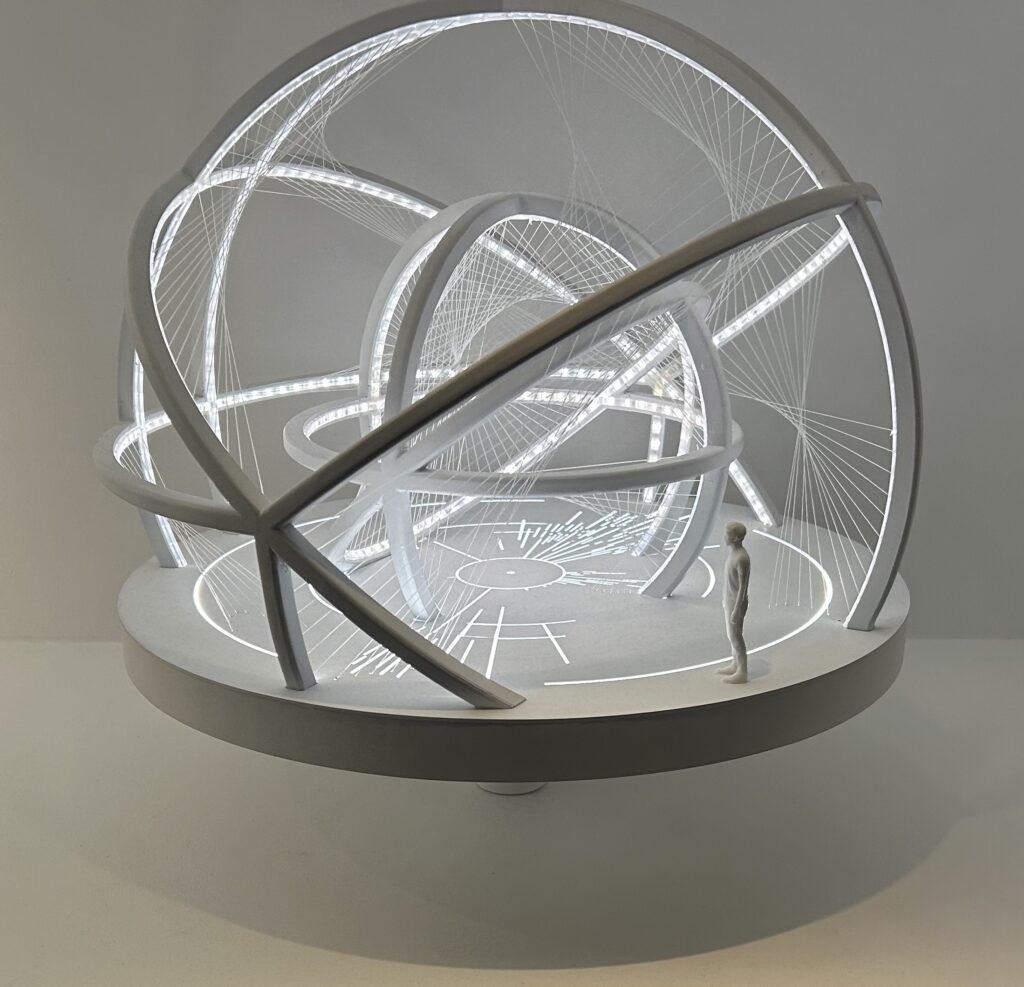Andrea Lipps, editor, Daniel Devlin book design: An Atlas of Es Devlin. Thames and Hudson 2023. ISBN 9780500023181

The most fascinating exhibition I never saw is and was the Cooper Hewitt Smithsonian Design Museum’s New York show An Atlas of Es Devlin. The focus of my review is thus the catalogue of the retrospective exhibition, which itself is an epic and extraordinary example of both exhibition catalogue design and book binding. Carefully boxed, the book features different types of paper and transparent mylar pages of different sizes bound into something of brick. These present the 2012-22 exhibition and theatre design of the architectural and set designer Es Devlin alongside commentary, conversations and critical essays. Different paper formats and materials support different contents. Even when thumbed, the different page materials all open at the start of each major work that is collected in the retrospective. The catalogue concludes with two innovative visual indexes of the projects and commentaries. Her work process begins with drawing:

“I had been drawing really intensely, sometimes 18 hours a day…” (Es Devlin p.xvi)
“it’s through her drawings that one most closely approaches her thoughts, whether through meditative portraits and studies or urgent concepts rushed across sheets of music, scraps of newspaper, printed emails and set lists, or in the margins of scripts.” (Andrea Lipps p.xiv)
“In the early days. of modern science, drawing was an important practice to approach and understand all these new phenomena discovered in the world. Involving the mind and the hand, the practice of drawing creates a connection to the studied object that is not only rational, but also physical, emotional and affective. You give something of yourself. In addition, drawing imbues these objects that are studies with time… Goethe for example, spent hours, days and months in museums, looking, writing and drawing.” (Dorothea von Hantelmann p.i)

Devlin’s work reminds one of Alice’s plunge into Wonderland. As a design and structural motif, orifices provide keyhole glimpses and portals into multilayered stage sets and tableaux. These are cut through pages literally bringing the reader into and inside Devlin’s archive. We plunge back through circular timelines of her work. Her installations have supported a myriad of great performances and artistic works. Photographically these are a challenge to present and take the form of double page spreads that are both representational but also conceptual. They are not shot to simply present each work to the reader but to give a sense of its quality or spirit. Sketches and photos of maquettes and models follow to introduce one into a world which is a bit like a child’s playhouse on whose stage, different dramas and mini utopias have been constantly unveiled.



I felt spun around by Devlin’s breathtaking creativity. The use of the printing press to create cutouts and cut-throughs extends to maquettes of her bas reliefs and use of almost cloud-like assemblages of cards and paper-like cutouts. In some of her work, a snow storm of elements seems to swirl about the visitor both in the exhibition and in the installations or stage sets that are re-presented in the show. To borrow from Sreten Ugricic’s lecture ‘A proof by snow‘ the artistic use of such snow flurries marks the presence of the out-of-the-ordinary, of the transcendent that, like falling snow, impinges on and transforms our view of otherwise banal, everyday places and activities. Unsurprisingly then, one of Es Devlin’s preoccupation, evident in the installation ‘Memory Palace,’ is epochal changes of attitudes viewpoints and outlooks. Citing Timothy Morton, she asks, At a moment of climate crisis denial, how do artists not pontificate but amaze to change attitudes?

This catalogue is conceived as an atlas: ideas are deployed and demonstrated spatially, on the stadium scaled sets of rock stars, London theatrical stages and Superbowl half-time shows. The volume is thus a fitting microcosm of the panoply of Devlin’s work. The catalogue opens into an oeuvre that is a whole universe of the possible.
-Rob Shields (Univ. of Alberta)

